The slaughterhouses and abattoirs in this roundup, originally built for slaughtering animals, have been transformed into galleries, breweries and cooking schools.
Some of the examples have had considerable alterations to make them suited for their new purpose, while others retain original features – such as white-tiled walls and metal bars – in a nod to their industrial past.
From Spain and Denmark to the United Arab Emirates, here are six slaughterhouse conversions from the Dezeen archive:
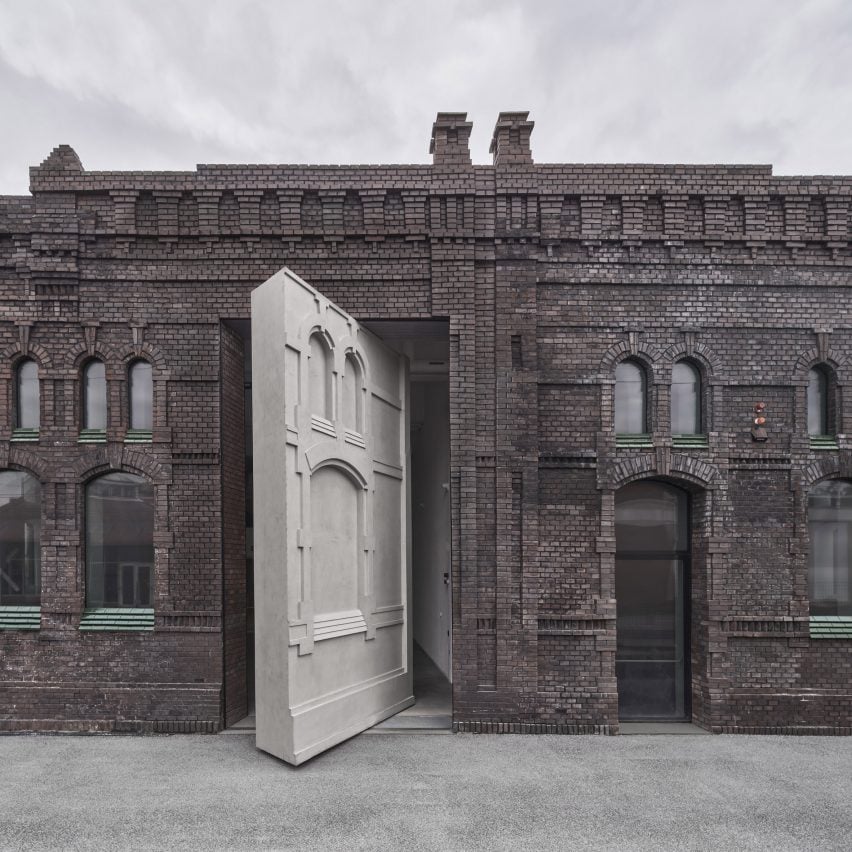
Plato Contemporary Art Gallery, Czech Republic, by KWK Promes
Architecture studio KWK Promes converted a 19th-century slaughterhouse in the Czech Republic into the Plato Contemporary Art Gallery, adding a concrete extension and rotating walls with impressions of windows.
After decades of being in disrepair, the studio’s transformation of the heritage-protected building features white exhibition spaces that open up to the surrounding gardens.
Find out more about Plato Contemporary Art Gallery ›
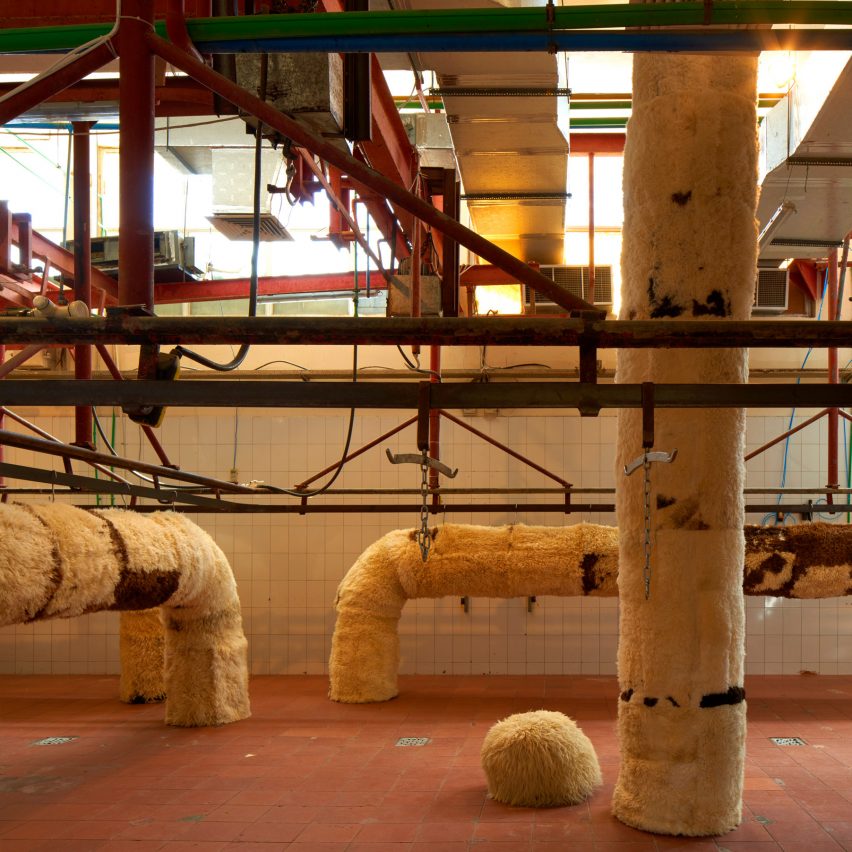

Anthropocene Museum 9.0, United Arab Emirates, by Cave Bureau
For the latest Sharjah Architecture Triennial, Kenyan architectural studio Cave Bureau transformed the still-functioning Old Sharjah Slaughterhouse into the Anthropocene Museum 9.0, guiding visitors along the route taken by animals for slaughter.
Guests entered through the gates, then travelled through the pens and up a ramp leading to the slaughterhouse and processing rooms, passing installations that focused on issues surrounding decolonialisation and decarbonisation.
Find out more about Anthropocene Museum 9.0 ›
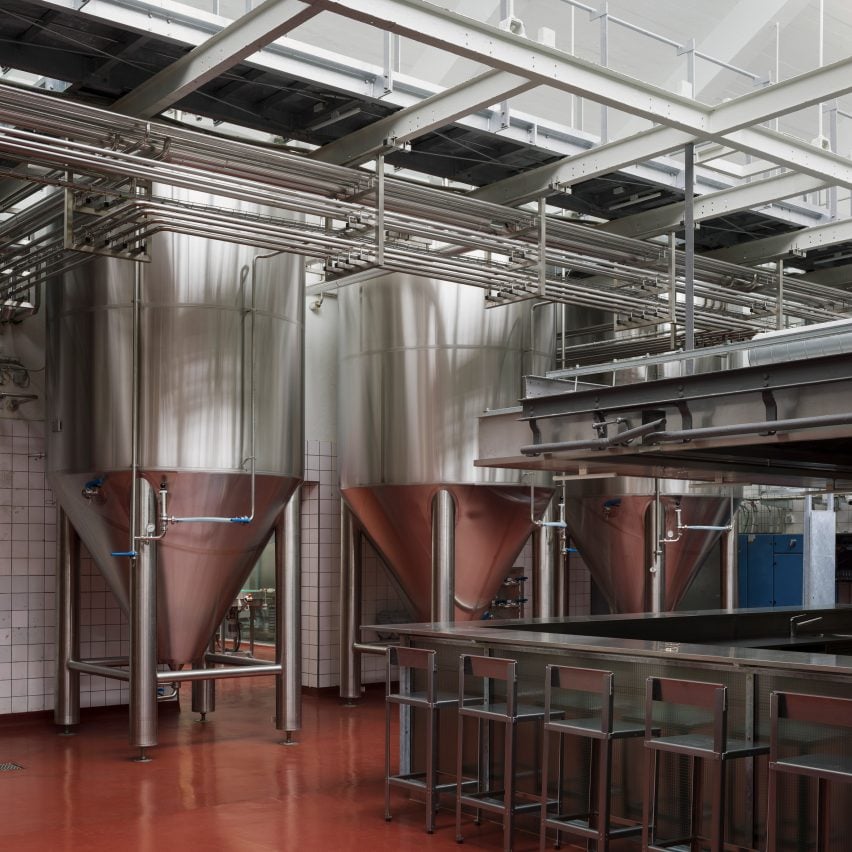

ÅBEN brewery, Denmark, by Pihlmann Architects
Local studio Pihlmann Architects created the ÅBEN brewery in Copenhagen inside a former slaughterhouse, hanging bulbous steel tanks where carcasses were once suspended.
Originally built in 1932, Pihlmann Architects restored most of the original features, including white wall tiles, and added semitransparent curtains to separate dining spaces.
Find out more about ÅBEN brewery ›
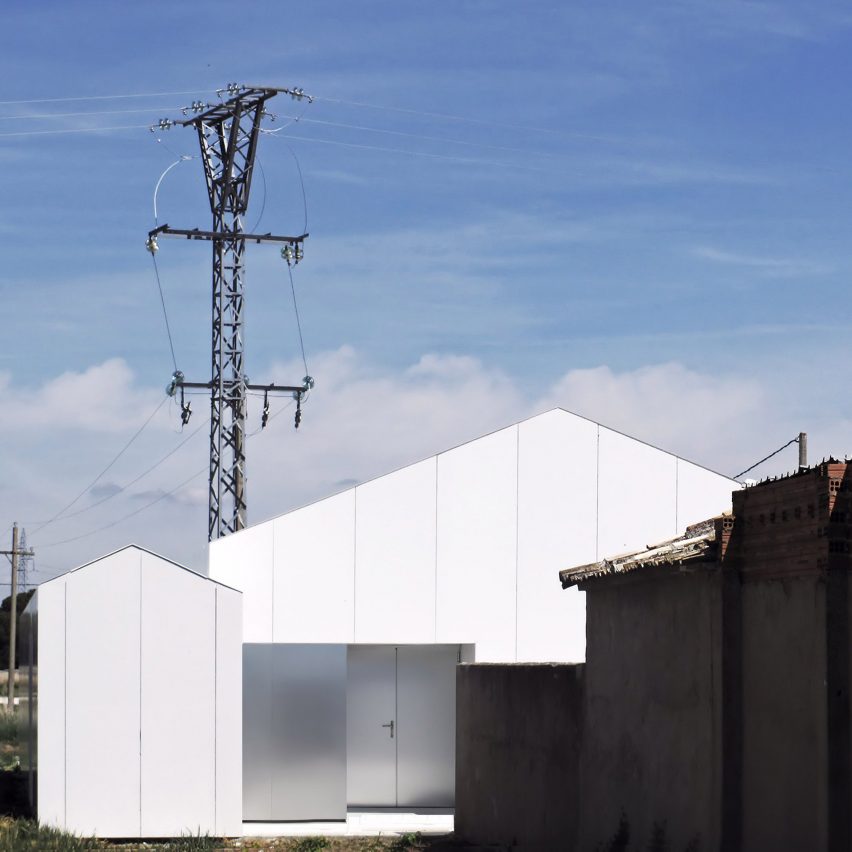

Resin Interpretation Centre, Spain, by Óscar Miguel Ares Álvarez
Architect Óscar Miguel Ares Álvarez overhauled a slaughterhouse in a Spanish village by wrapping it in a windowless white facade, converting it into the Resin Interpretation Centre gallery and community centre.
Ares Álvarez retained the shape of the former slaughterhouse, which has a similar silhouette to its neighbouring buildings, but covered it in uniform white to make it stand out.
Find out more about the Resin Interpretation Centre ›
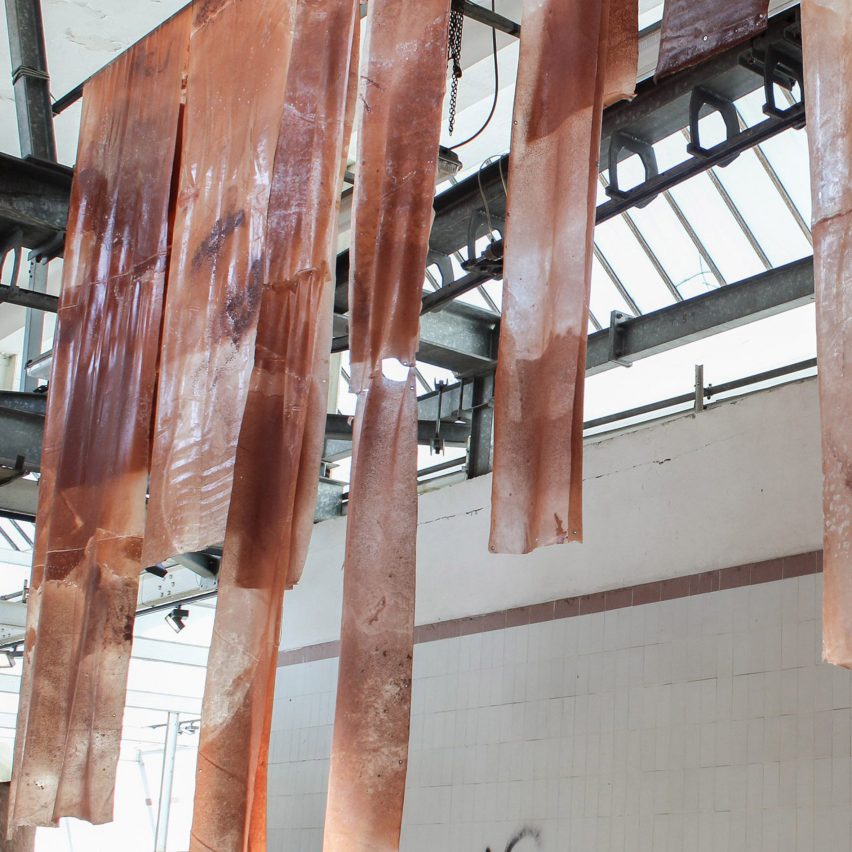

Brick Textiles installation, Italy, by Natural Material Studio and Zuzanna Skurka
At last year’s Milan design week, Copenhagen-based Natural Material Studio and designer Zuzanna Skurka created an installation of soft bio textiles in a former abattoir in Porta Vittoria.
Made from bricks repurposed from demolition sites, the red-hued Brick Textiles were cut into slabs and suspended from metal bars where meat was once hung.
Find out more about Brick Textiles installation ›
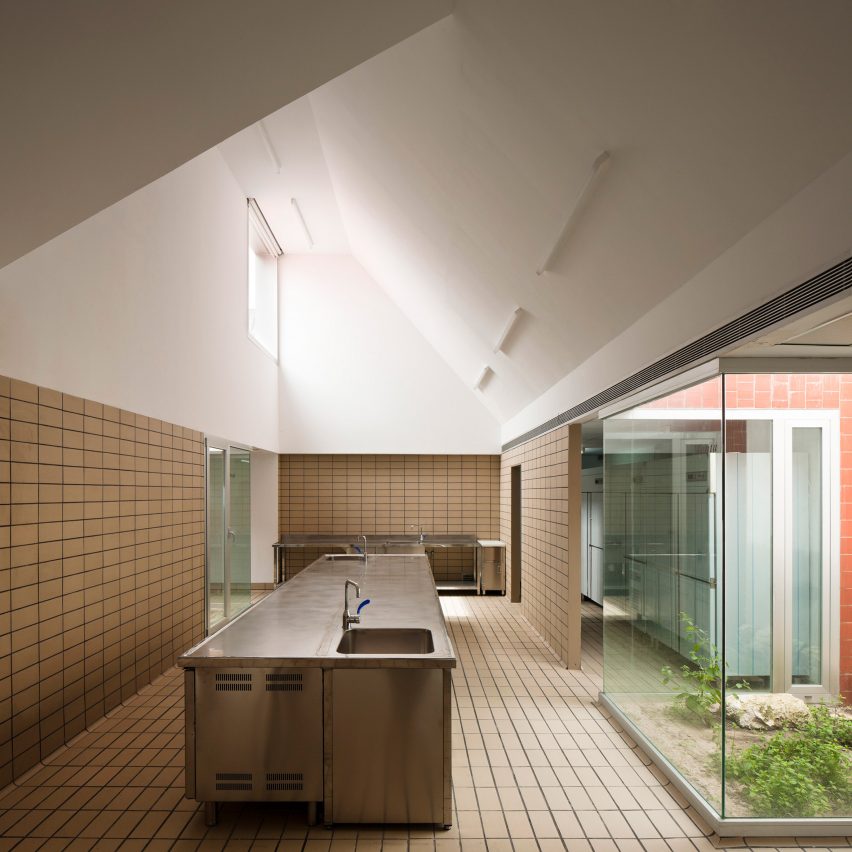

Professional Cooking School, Spain, by Sol89
Outdoor paddocks and a courtyard used for storing livestock in this nineteenth-century slaughterhouse were converted into kitchens and classrooms for the Professional Cooking School in Medina-Sidonia, Spain.
Designed by Spanish architecture studio Sol89, the extension’s asymmetric roofs were clad in red ceramics, while white-painted walls surround the perimeter.
Find out more about Professional Cooking School ›
